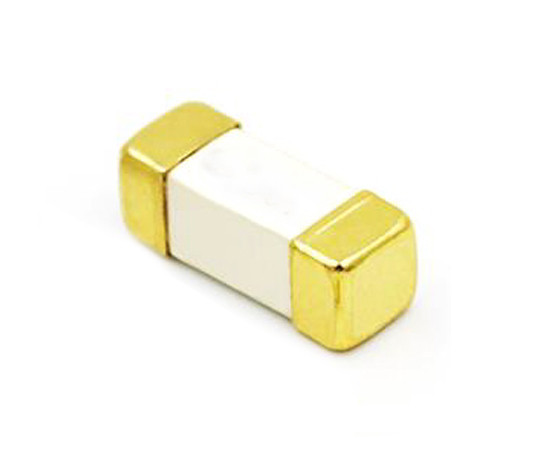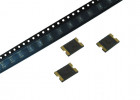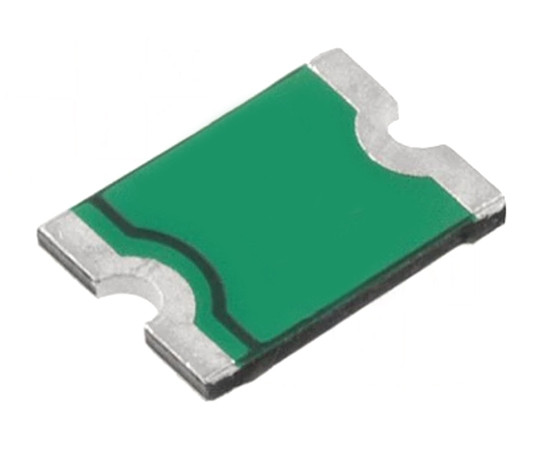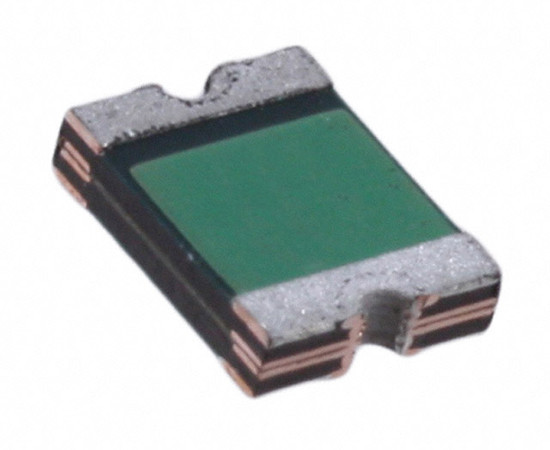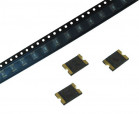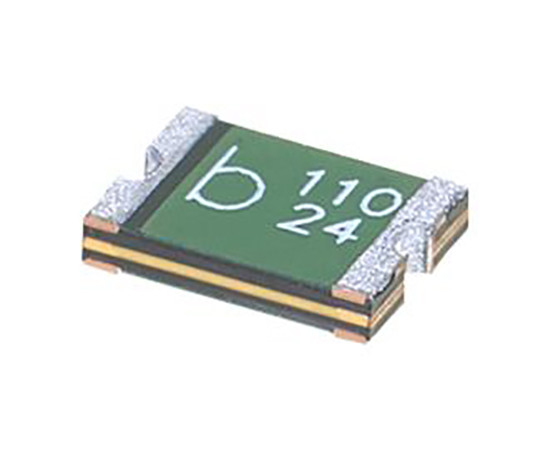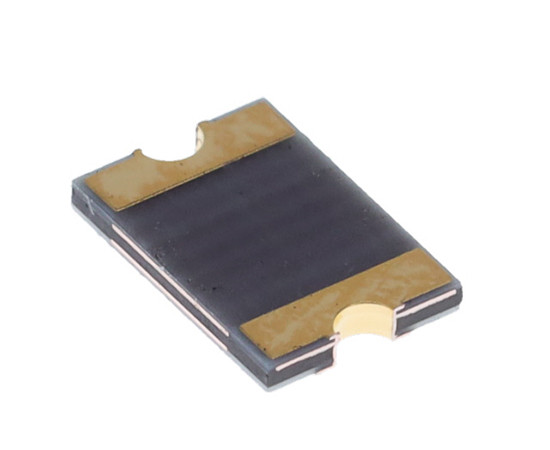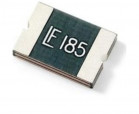Fuses (results: 1705)
| Product | Cart | |
|---|---|---|
|
Resettable fuse; 2A
Resettable fuse; SMD1206; current: 2A; voltage: 6V; operating temperature: -40÷85°C; equivalents: MF-NSMF200; NANOSMDC200F-2; FSMD200-1206R; 1206L200; 0ZCJ0200FF2C
|
||
|
|
Item available on a request
|
|
|
Resettable fuse; 2,5A
Resettable fuse; SMD1206; current: 2,5A; voltage: 6V; operating temperature: -40÷85°C;
|
||
|
|
Item available on a request
|
|
|
Resettable fuse; 2,5A
Resettable fuse; SMD1206; current: 2,5A; voltage: 12V; operating temperature: -40÷85°C;
|
||
|
|
Item available on a request
|
|
|
Resettable fuse; 0.05A
Resettable fuse; SMD1210; current: 0.05A; voltage: 30V; operating temperature: -40÷85°C; equivalents: MF-USMF005; MicroSMD005F-2; 1210L005; FSMD005-1210
|
||
|
|
Item available on a request
|
|
|
|
Item in delivery
Estimated time: 2025-05-15
Quantity of pieces: 4500
|
|
|
0ZCH0005FF2E Bel Fuse
Resettable fuse; SMD1210; current: 0.05A; voltage: 60V; operating temperature: -40÷85°C;
|
||
|
|
Item available on a request
|
|
|
Resettable fuse; 0.35A
Resettable fuse; SMD1210; current: 0.35A; voltage: 16V; operating temperature: -40÷85°C; equivalents: MF-USMF035; FSMD035-1210; 0ZCH0035FF2G
|
||
|
|
Item available on a request
|
|
|
0ZCH0050FF2G Bel Fuse
Resettable fuse; SMD1210; current: 0.50A; voltage: 16V; operating temperature: -40÷85°C; equivalents: BpS10-500-16
|
||
|
|
Item available on a request
|
|
|
Resettable fuse; 1.1A
Resettable fuse; SMD1210; current: 1.1A; voltage: 6V; operating temperature: -40÷85°C; equivalents: MF-USMF110; MicroSMD110F-2; FSMD110-1210R; 1210L110
|
||
|
|
Item available on a request
|
|
|
Resettable fuse; 1.5A
Resettable fuse; SMD1210; current: 1.5A; voltage: 6V; operating temperature: -40÷85°C; equivalents: MF-USMF150; MicroSMD150F-2; FSMD150-1210R; 1210L150; 0ZCH0150FF2E
|
||
|
|
Item available on a request
|
|
|
0ZCH0200FF2E Bel Fuse
Resettable fuse; SMD1210; current: 2A; voltage: 6V; operating temperature: -40÷85°C;
|
||
|
|
Item available on a request
|
|
|
Resettable fuse; 0.10A
Resettable fuse; SMD1812; current: 0.10A; voltage: 30V; operating temperature: -40÷85°C; equivalents: 1812L010
|
||
|
|
Item available on a request
|
|
|
Resettable fuse; 0.35A
Resettable fuse; SMD1812; current: 0.35A; voltage: 16V; operating temperature: -40÷85°C equivalents: 0ZCG0035FF2C
|
||
|
|
Item available on a request
|
|
|
0ZCG0050FF2C Bel Fuse
Resettable fuse; SMD1812; current: 0.50A; voltage: 16V; operating temperature: -40÷85°C; equivalents: BpS12-500-16
|
||
|
|
Item available on a request
|
|
|
MF-MSMF050/30X-2 Bourns Fuse
Resettable fuse; SMD1812; current: 0.50A; voltage: 30V; operating temperature: -40÷85°C equivalents: 1812L050/30PR; BpS12-500-30 B; MF-MSMF050/30X-2
|
||
|
|
Item available on a request
|
|
|
0ZCG0110AF2C Bel Fuse
Resettable fuse; SMD1812; current: 1.1A; voltage: 16V; operating temperature: -40÷85°C; equivalents: MF-MSMF110/16; MINISMDC110F/16-2; FSMD110-16; 1812L110/16; BpS12A01.10-16
|
||
|
|
Item available on a request
|
|
|
Resettable fuse; 1.5A
Resettable fuse; SMD1812; current: 1.5A; voltage: 12V; operating temperature: -40÷85°C; equivalents: MF-MSMF150; MINISMDC150F/12-2; FSMD150-12R; 1812L150/12; 0ZCG0150AF2C
|
||
|
|
Item available on a request
|
|
|
Resettable fuse; 1.5A
Resettable fuse; SMD1812; current: 1.5A; voltage: 16V; operating temperature: -40÷85°C; equivalents: MF-MSMF150; MINISMDC150F/16-2; FSMD150-16R; 1812L150/12
|
||
|
|
Item available on a request
|
|
|
|
Item in delivery
Estimated time: 2025-05-15
Quantity of pieces: 1500
|
|
|
0ZCG0260BF2B Bel Fuse
Resettable fuse; SMD1812; current: 2.60A; voltage: 16V; operating temperature: -40÷85°C equivalents: 1812L260/16MR
|
||
|
|
Item available on a request
|
|
|
1812L260/16MR Littelfuse Fuse
Resettable fuse; SMD1812; current: 2.60A; voltage: 16V; operating temperature: -40÷85°C equivalents: 0ZCG0260BF2B
|
||
|
|
Item available on a request
|
|
|
0ZCG0300FF2B Bel Fuse
Resettable fuse; SMD1812; current: 3.0A; voltage: 6V; operating temperature: -40÷85°C
|
||
|
|
Item available on a request
|
|
|
Resettable fuse; 1.25A
Resettable fuse; SMD2920; current: 1.25A; voltage: 15V; operating temperature: -40÷85°C; equivalents: SMD125F-2; FSMD125-2920; 2920L125
|
||
|
|
Item available on a request
|
|
|
2920L075/60MR Littelfuse Fuse
Resettable fuse; SMD2920; current: 1.5A; voltage: 60V; operating temperature: -40÷85°C
|
||
|
|
Item available on a request
|
|
|
SMD2920P185TF Littelfuse Fuse
Resettable fuse; SMD2920; current: 1.85A; voltage: 33V; operating temperature: -40÷85°C equivalents: FSMD185-2920; 2920L185; SMD185F-2; MF-LSMF185/33X; 0ZCF0185FF2C; BpS20A01.85-33
|
||
|
|
Item available on a request
|
|
|
0ZCF0300AF2C Bel Fuse
Resettable fuse; SMD2920; current: 3A; voltage: 15V; operating temperature: -40÷85°C; equivalents: 2920L300/15DR
|
||
|
|
Item available on a request
|
|
|
2920L400/15MR Littelfuse Fuse
Resettable fuse; SMD2920; current: 4A; voltage: 15V; operating temperature: -40÷85°C;
|
||
|
|
Item available on a request
|
|
Fuses
To ensure that devices operate correctly, they must be provided with suitable working conditions. Fuses protect circuits and installations from harmful factors, making them a common feature in most equipment. Our store offers components with various designs, allowing for the selection of components suited to many applications.
What is the Function of Fuses?
Fuses are crucial components in circuits, protecting them from excessive current, high or low temperatures, and other adverse conditions. The role of these elements is to interrupt the circuit when the values that define the safe operating conditions of the device are exceeded. Despite their critical function, fuses are relatively simple in design and operation, resulting in generally low prices.
Fuses can be found in virtually every electrical and electronic device. They are also used in vehicles and buildings to protect existing installations. Electrical fuses are also utilized by hobbyists working with electronics, as they are vital components in both simple and complex circuits.
Fuses – Classification by Application
There are various types of fuses available on the market, making it sometimes challenging to choose the right one. It's essential to understand the basic classification of these components. The simplest distinction considers the application area of the fuses. We can primarily differentiate elements intended for vehicles, various electronic circuits, electrical installations in buildings, and other specialized applications.
Types of Fuses – Classification by Structure and Function
Another important classification divides fuses into single-use and reusable types. The first category includes cartridge fuses, where the filament melts when overheated by excessive current flow. The second category includes polymeric fuses, which must cool down after interrupting the circuit before they can operate again, and reusable electrical fuses, which are systems comprising several components, such as transistors or flip-flops.
There is also a distinct group known as thermal fuses. Unlike the aforementioned components, these disconnect the circuit not due to excessive current flow but when there is an excessive rise in temperature. They are thus used in devices that may be damaged by overheating.








